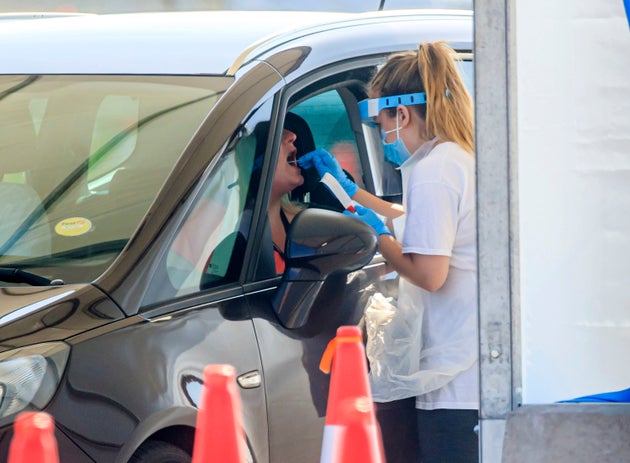Coronavirus has changed everything. Make sense of it all with the Waugh Zone, our evening politics briefing. Sign up now.
Coronavirus case and death rates have fallen to levels last seen at the beginning of the UK lockdown, Matt Hancock has announced.
The health secretary declared that the UK is “getting this virus under control” and “winning the battle”.
But he pleaded with members of the public to get coronavirus tests if they have new symptoms, with ministers facing questions over the effectiveness of its contact tracing programme.
Hancock also revealed that tracers were getting in touch with fewer contacts of infected people than previously envisaged, but said this “implies that people are following the social distancing rules”.
There were 1,570 confirmed coronavirus cases on June 1, “the lowest number since March 25” – two days after lockdown began, Hancock said.
This was out of 128,437 tests – many times more the number of tests carried out on March 25, meaning the proportion of people testing positive for Covid-19 has dropped substantially.
There were also 111 deaths in the UK with coronavirus confirmed in a test – the lowest level since lockdown began on March 23.
On the further easing of the lockdown which came into force on Monday, the health secretary said: “We’re getting this virus under control and this is why we can make the cautious, small, positive steps that we’ve been able to make today.”
He added: “The data shows that we are winning the battle against coronavirus.”
But he warned that “the disease is not done yet” and urged people to continue following the government guidelines to ensure the UK’s progress isn’t “thrown away”.

Hancock also pleaded with the public to continue getting tested if they have symptoms amid fears the government’s 25,000 contact tracers were under-employed.
“It is incredibly important for anybody who has symptoms of coronavirus – a cough or a fever or a change in your sense of taste and smell – that you get a test.
“Because it’s by people coming forward to get the test… that we are able to identify those who have got the virus, ensuring you get the best possible treatment and ensuring that we can then trace the virus and through that we can control the virus.”
Hancock also insisted it was a “good thing” that tracers did not have much to do at the moment.
He added: “The level of incidence of disease has come down and so actually we have more capacity than we need, this is a good thing.”
He went on: “I think to err on the side of having too many contact tracers is the right side to err on.
“I’d rather have too many people trained and ready to go.
“We’ve got 7,500 clinicians in the system which means that for every new case we have on average six clinicians able to support them.
“The number of contacts that each indexed case has is a bit lower than we were expecting, which implies that people are following the social distancing rules and are not coming into contact with large numbers of people, and that of course reduces the demand on the contact tracers.”
Professor John Newton said it was working well, stressing: “We do have a lot of capacity.”
And he said the government hoped to be in a position to publish figures on how many people have been contacted and traced soon, once it has ensured the data is reliable.